Power, Sound, R/C
:
Remote Control
Throttle Guide Part I : VCS Realroad
Sep 1, 2004


By Randy Mower |
Author
Bio
Here is our review of Reed's Instant RC System/VCS RealRoad.
|
Reed's Instant RC System/VCS RealRoad The RealRoad radio control system The RealRoad "Velvet Touch" throttle system utilizes a standard BEC FM transmitter (1, 2 or 3 channel) and receiver (75 Mhz) and a control module, which controls speed and direction. The module also has connections for controlling a sound system (whistle, bell, and one auxiliary). Because this system uses BEC radio gear it would be possible to use the third channel to control a servo, which could be placed onboard to control a mechanical function like remote control uncoupling. The RealRoad system uses a memory feature to keep the engine at the selected speed and direction. You only have to transmit a signal when you want to change either one. This helps to eliminate glitching that could result if a continuous signal was needed. In fact once you set your engine to the desired speed and direction you can turn off the transmitter to conserve the batteries. What do you get? Our sample unit included a three-channel transmitter and receiver (HiTec Ranger III) the control module, and a 5A fuse. 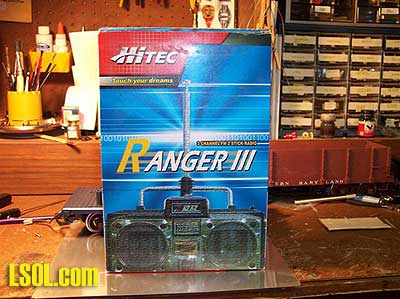
The transmitter and receiver come packaged in a Styrofoam lined box.
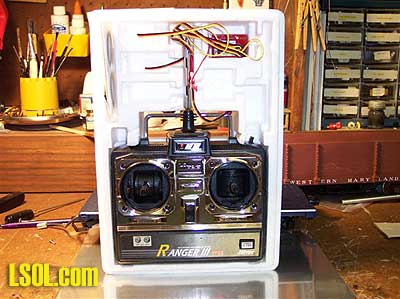 The transmitter measures 6 1/2" x 6 1/2" x 3" and the antenna extends to 34". The transmitter's batteries are installed from the rear of the unit a battery cover slides off to reveal where 8 AA batteries are installed . 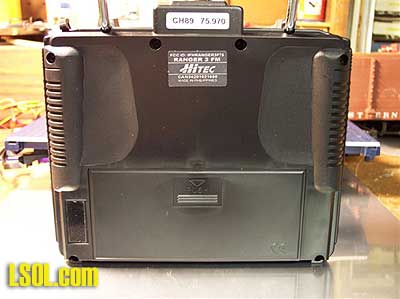  The transmitter has two joystick controls. The left stick (channel 2)(up and down) controls the speed and direction. 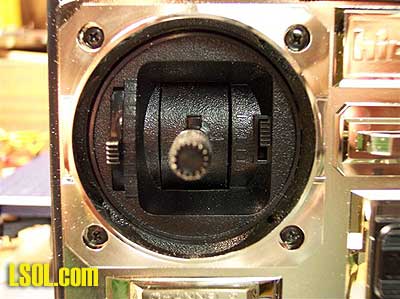
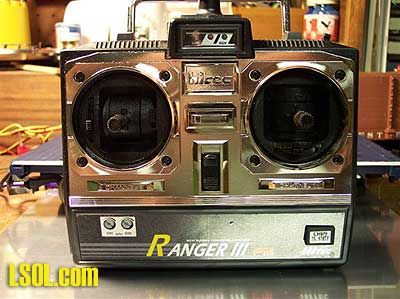 The right stick (channel 1) controls the whistle and bell. The channel three control is on the right side of the top. 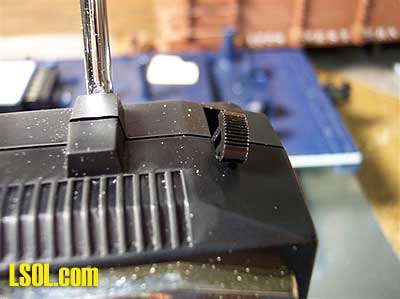
The receiver measures 1 1/2" x 1" x 1 7/8". 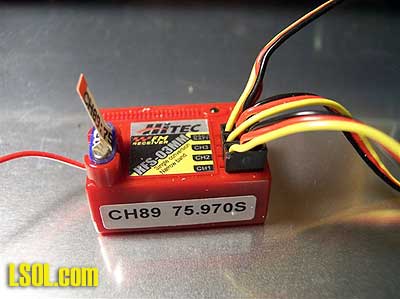 There are three small three-wire plugs, which plug into each of the three channels on the receiver. 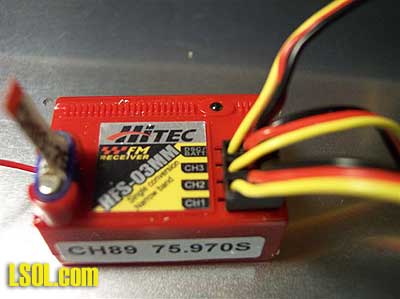
The control unit is the heart of the RealRoad system. 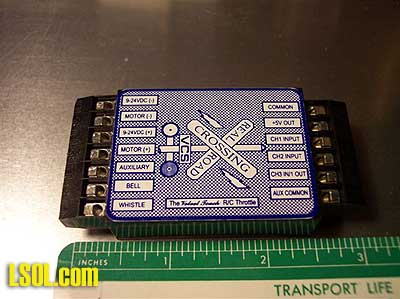 It uses the signal from the channel two of the receiver to control the speed using pulse width control as well as the direction of the engine. It uses channel one to control the whistle and bell and channel 3 can be used for an auxiliary sound feature like blow down or station announcements or even a servo. The control unit measures 3" x 1 1/2" and is 5/8" thick. There are connectors for the wires on both ends and the module is completely sealed.
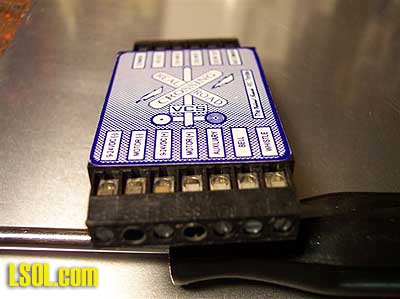 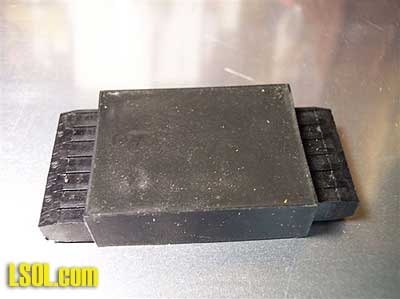 All the wiring connections are clearly labeled and wiring is very easy to follow. The kit also includes a wire connector with a replaceable fuse, which should be installed inline to the power from the battery. All the wiring connections are clearly labeled and wiring is very easy to follow. The kit also includes a wire connector with a replaceable fuse, which should be installed inline to the power from the battery.
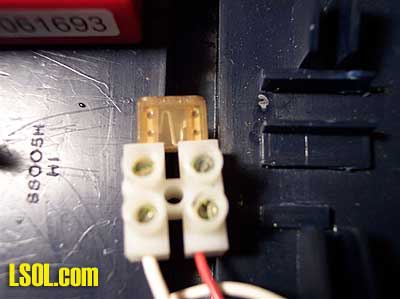
The control unit is compatible with any sound card on the market; however, it appears to be designed to be used with a Sierra sound card. The wiring connections between the control unit and a Sierra card are very easy to make and the wiring diagram that comes with the unit is specifically for connecting a Sierra sound card. There is no need for an optoisolator unit when using a Sierra card with the RealRoad controller. 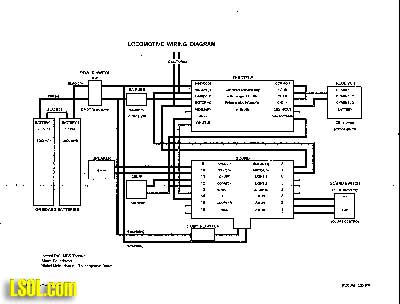
Testing the unit To evaluate this and the other units we are testing we rigged a test bed using a Bachmann 10th anniversary 10 wheeler with a spare tender and an auxiliary battery car.
Hooking It Up First, we connected the power leads from the battery car to the input power and connected the output to the motor leads. 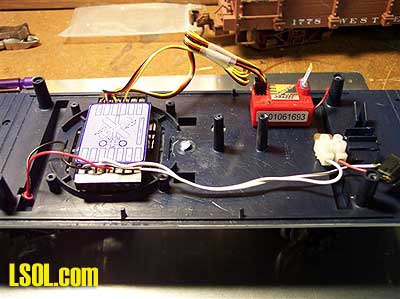
Next the receiver was connected to the control unit. 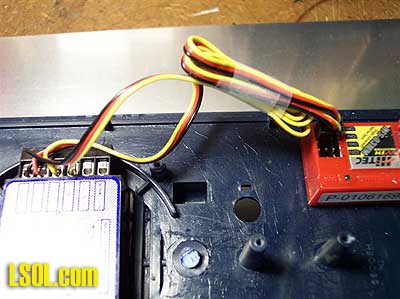
Finally we used a piece of cardboard to wrap the antenna lead around. 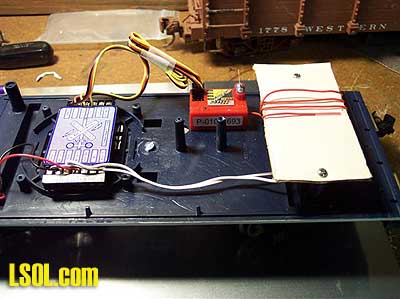
The test unit with the engine, tender and battery car was then taken outside for some test running. 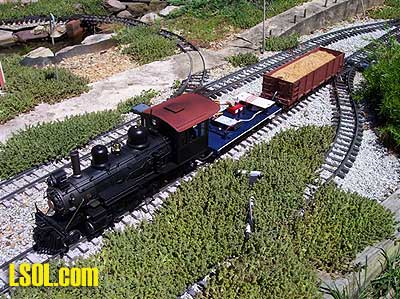
Programming After hooking every/Thing up there are just four steps to have the system running. * Always turn on the transmitter first (make sure the trim levers are centered) * Turn on the power at the controller second * Allow thirty (30) seconds for the controller to locate the transmitter signal * The system is now ready to operate Evaluation of controls The RealRoad controller uses a momentum throttle. To move forward push the left lever forward and the train will start to move forward. When it reaches the desired speed let the lever return to center. To slow the train, pull the lever down. The train will decelerate and stop. The controls are proportionate which means the farther you move the lever the faster the engine will react. When slowing, the engine will come to a full stop before it will reverse. Because of the momentum effect it takes a few seconds for the engine to react to throttle commands. While this allows for the engine to react in a prototypical manner it could make it difficult if you are doing a lot of switching. Currently there is no way to change the momentum delay. Range I found that the unit operated very reliably until I reached a distance of 125 feet. Beyond that point the unit would operate with reduced reliability, although I could increase the range up to 140 feet by holding the transmitter higher. Specifications: Input Voltage -------------------------- 8-24 volts
Maximum Current -----8 amps, 4 amps continuous
Output PWC frequency ----------------- 244 PPS
Address: 8866 Summerhill Point Alpine CA 91901-2779
Phone: (619) 445-5145
Retail Price: $129.99 Reed's Instant RC Control Unit $349.99 Budget RC kit (includes RC Control unit, Transmitter/receiver, two (2) 7.2VDC 3000 Mah Ni-Mh batteries and a charger. $80 and up 3 Channel Transmitter (amount varies depending on bells & whistles (no pun intended).
Summary: I found that the unit operated very reliably and we did not encounter any glitching while we were running our test bed engine. There is no complicated or advanced programming with the RealRoad system. Pros: Uses common reliable FM 75 MHz BEC radio gear. Does not need optoisolator for Sierra sound cards. Excellent Range. Screwdown connectors for wires. Does not require add on unit to control sound. Possible to use a servo for mechanical controls like automatic uncoupling. Simple to wire and install. Cons: Transmitter is large and one transmitter is required per engine. Momentum is not adjustable, can make it hard to use for switching. No emergency stop. Coming up: We will be evaluating onboard control systems from RCS and Aristocraft and a final side-by-side comparison of all three. Then we will show you some step-by-step installations in various engines. Top of Page
|



